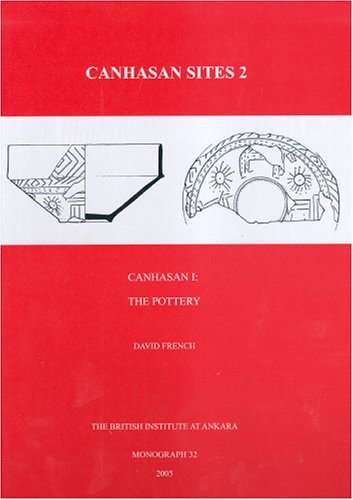The excavations at Canhasan Höyök I in the Konya plain of central Turkey revealed a series of settlements running through the Chalcolithic period (c.5500-3000 BC). The pottery from the site, much of it of types previously unknown or not found elsewhere in stratified contexts, is of fundamental importance for an understanding of this period in Anatolia. In this volume, Dr French, the excavator of Canhasan and for many years director of the British Institute at Ankara, carefully and concisely presents both the plain and decorated wares, with detailed descriptions of their characteristic fabrics, shapes and decoration. There is a...Read more
The excavations at Canhasan Höyök I in the Konya plain of central Turkey revealed a series of settlements running through the Chalcolithic period (c.5500-3000 BC). The pottery from the site, much of it of types previously unknown or not found elsewhere in stratified contexts, is of fundamental importance for an understanding of this period in Anatolia. In this volume, Dr French, the excavator of Canhasan and for many years director of the British Institute at Ankara, carefully and concisely presents both the plain and decorated wares, with detailed descriptions of their characteristic fabrics, shapes and decoration. There is a full catalogue of the best-preserved and most important pieces (which were registered finds), but a major feature of the volume are the drawings of over 2500 less well-preserved pieces, which illustrate all the characteristic shapes and types of decoration. A special feature of the study is a careful grading of the material in terms of chronological reliability. The author privileges the whole, or nearly whole, pots found on floors in each layer, as the only types which were certainly made at the time. Related pottery may be accepted as contemporary, but with less certainty, while unrelated wares must be treated with circumspection, for they may be either recycled from an earlier layer or intrusive from a later one. This rigorous methodology means that the Chalcolithic pottery provides a completely reliable relative chronology through the Chalcolithic period, and the volume will remain a basic reference for Near Eastern archaeology.
- ISBN10 1898249164
- ISBN13 9781898249160
- Publish Date 15 August 2005
- Publish Status Active
- Publish Country GB
- Imprint British Institute of Archaeology at Ankara
- Format Hardcover
- Pages 296
- Language English

